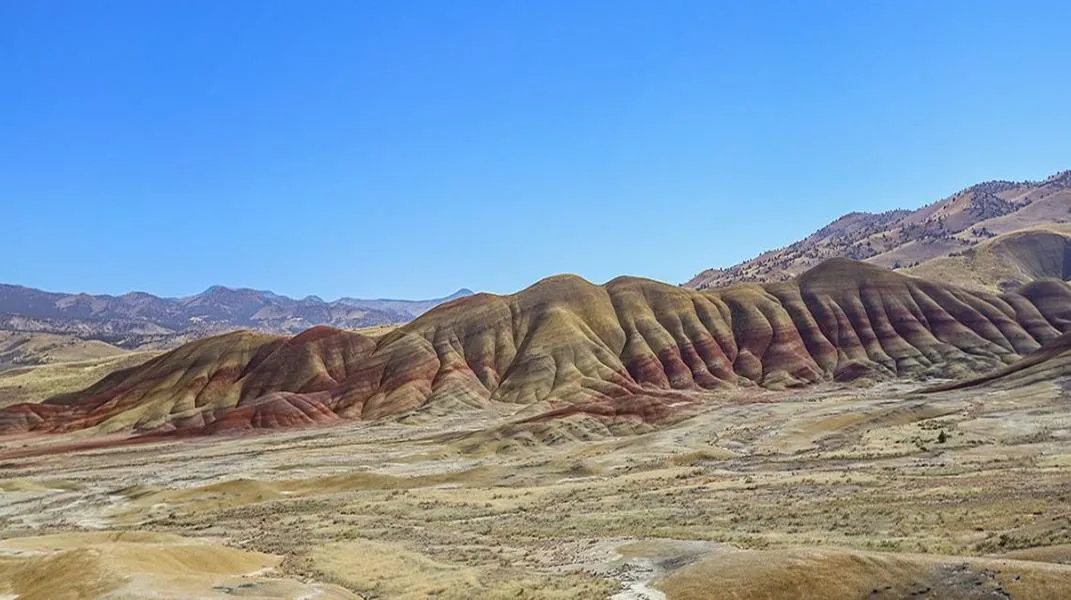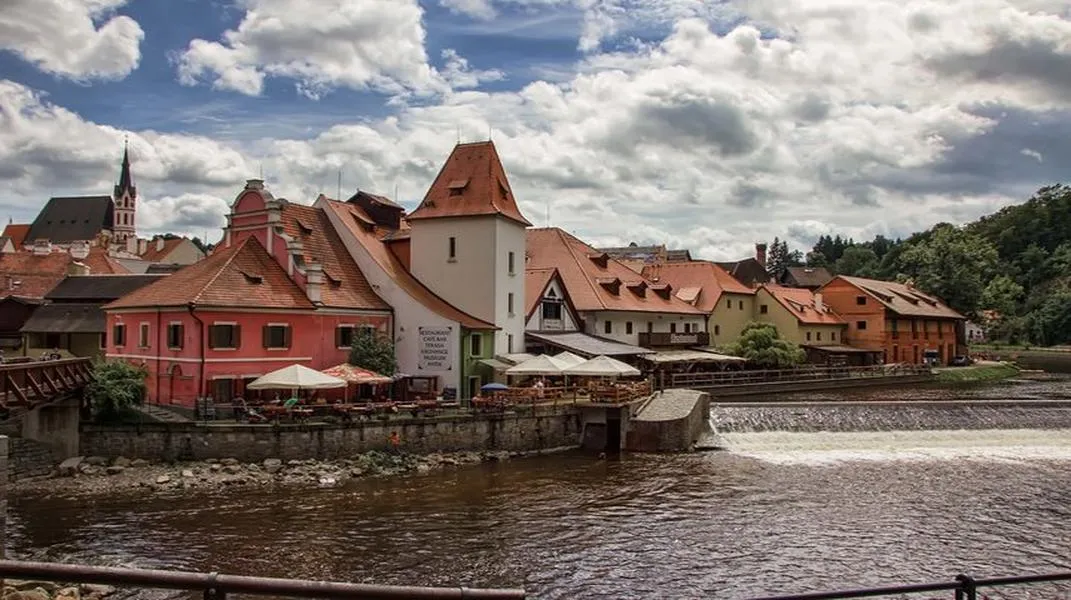Exploring John Day Fossil Beds National Monument: A Journey Through Time
Nestled in the rugged landscapes of eastern Oregon, John Day Fossil Beds National Monument is a treasure trove of ancient history and natural beauty. Renowned for its rich deposits of fossils dating back over 40 million years, the monument attracts paleontologists, nature lovers, and tourists alike. With its stunning scenery, vibrant colors, and diverse ecosystems, John Day Fossil Beds offers a unique opportunity to explore the past while enjoying the great outdoors.

A Brief History of John Day Fossil Beds
The John Day Fossil Beds were established as a national monument in 1975, although the area has been a significant paleontological site for much longer. The fossil beds are named after the nearby John Day River, which was itself named after a pioneer who lost his boat in the river in the mid-19th century. The fossil beds are most famous for their well-preserved specimens from the late Eocene to the Miocene epochs, allowing scientists to piece together the evolution of life on Earth.
The monument is divided into three main units: the Sheep Rock Unit, the Painted Hills Unit, and the Clarno Unit. Each unit has its unique features, offering visitors a diverse range of experiences.
The Three Units of John Day Fossil Beds
1. Sheep Rock Unit
The Sheep Rock Unit is the largest of the three and serves as the primary hub for visitors. This area is home to the Thomas Condon Paleontology Center, where guests can learn about the fossil discoveries made in the monument. The center features interactive exhibits, displays of fossil specimens, and educational resources for all ages.
The unit also boasts several hiking trails that allow visitors to explore the stunning landscapes filled with colorful rock formations. The Blue Basin Trail is a popular choice, leading hikers through a breathtaking basin characterized by blue-green volcanic ash deposits. The trail is approximately 2.5 miles long and offers panoramic views of the surrounding hills and valleys.
2. Painted Hills Unit
The Painted Hills Unit is perhaps the most iconic section of John Day Fossil Beds, known for its strikingly colorful hills that change hues with the light, creating a vibrant canvas of reds, golds, and blacks. This area showcases the geological history of the region, with layers of soil representing different epochs and environmental conditions.
Visitors can explore the trails that wind through the hills, such as the Painted Cove Trail, which features boardwalks and overlooks, providing excellent vantage points to admire the unique geological formations. The unit is also a prime location for photography, especially during sunrise and sunset when the colors are at their most vivid.
3. Clarno Unit
The Clarno Unit offers a different perspective on the region's geological history, featuring ancient volcanic activity and a unique collection of fossilized plants. The unit's most notable feature is the Clarno Nut Beds, where visitors can find fossils of fruits and nuts that existed during the Eocene epoch.
The trails in this unit, such as the 1.5-mile long Trail of the Fossils, take you through a landscape filled with remnants of ancient flora. The rugged terrain and dramatic cliffs provide a picturesque backdrop for hiking and exploring the diverse plant life that thrives in the area.
Preparing for Your Visit
To fully enjoy your visit to John Day Fossil Beds National Monument, proper preparation is essential. Below is a comprehensive guide to help you get ready for your adventure.
1. When to Visit
John Day Fossil Beds can be visited year-round, but the best time is during the spring and fall when temperatures are mild and the scenery is at its most vibrant. Summer can be hot, especially in the Painted Hills, while winter may bring snow and colder temperatures. Check the weather forecast before your visit to pack accordingly.
2. What to Bring
- Water: Staying hydrated is crucial, especially during hikes. Bring a refillable water bottle or hydration system.
- Snacks: Hiking can be strenuous, so pack energy-boosting snacks like trail mix, granola bars, or fruit.
- Sunscreen and Hats: The sun can be intense, especially in open areas. Protect your skin and eyes with sunscreen and a wide-brimmed hat.
- Comfortable Footwear: Wear sturdy, comfortable hiking shoes or boots that provide support and traction for rocky trails.
- Layers of Clothing: Weather can change rapidly in the region, so dress in layers to adapt to varying temperatures throughout the day.
- Camera: The stunning landscapes and colorful formations are perfect for photography, so don’t forget your camera or smartphone.
- Field Guides: If you’re interested in the flora and fauna, consider bringing a field guide to enhance your understanding of the local wildlife.
3. Visitor Centers and Resources
The Thomas Condon Paleontology Center in the Sheep Rock Unit is your first stop for information. The center offers educational exhibits about the fossils found in the area and features knowledgeable staff who can answer questions and provide maps and brochures. Additionally, consider picking up a junior ranger activity booklet if you are visiting with children.
4. Hiking Trails
Research the hiking trails in advance to find the best options for your experience level. Popular trails include:
- Blue Basin Trail: A moderately difficult trail offering breathtaking views of the blue-green basin.
- Painted Cove Trail: An easy, accessible trail perfect for families and those looking for a short hike.
- Trail of the Fossils: This trail in the Clarno Unit features educational signage about the ancient plants and fossils encountered along the way.
5. Safety Tips
- Wildlife Awareness: Keep a safe distance from wildlife and do not feed them.
- Stay on Trails: To protect the fragile ecosystem and for your safety, stick to marked trails.
- Weather Preparedness: Be aware of changing weather conditions and adjust your plans accordingly.
6. Camping and Accommodations
If you plan to extend your visit, there are several camping options nearby, including the John Day River and the surrounding state parks. For those preferring more comfort, the towns of John Day and Dayville offer various lodging options, from motels to bed-and-breakfasts.
Activities Beyond Hiking
While hiking is a primary activity at John Day Fossil Beds, there are other ways to enjoy the monument:
1. Fossil Collecting
While collecting fossils is prohibited in the monument, you can participate in organized fossil digs and educational programs. Check with the visitor center for information on special events and programs available during your visit.
2. Photography
The monument is a photographer’s paradise. Capture the vibrant colors of the Painted Hills, the stunning landscapes of the Sheep Rock Unit, and the unique geological formations of the Clarno Unit. Be sure to plan your shoots during the golden hours of sunrise and sunset for the best light.
3. Bird Watching
The diverse ecosystems within the monument attract various bird species. Bring binoculars and a bird guide to enhance your birdwatching experience.
4. Star Gazing
Due to its remote location and minimal light pollution, John Day Fossil Beds is an excellent place for stargazing. Bring a blanket and settle down for an unforgettable night under the stars.
Conclusion
John Day Fossil Beds National Monument is a remarkable destination that offers a glimpse into the ancient past while providing stunning natural beauty. With its diverse units, rich fossil history, and ample outdoor activities, it is a must-visit for anyone interested in geology, paleontology, or simply enjoying the great outdoors. By preparing adequately for your visit, you can ensure an enriching and memorable experience in this unique corner of Oregon.
As you explore the vibrant landscapes and discover the stories etched in stone, you will leave with a deeper appreciation for the natural world and the incredible history that surrounds us. Whether you are a seasoned hiker, a budding paleontologist, or a family looking for adventure, John Day Fossil Beds National Monument has something to offer everyone. So pack your bags, grab your camera, and prepare for an unforgettable journey through time!




